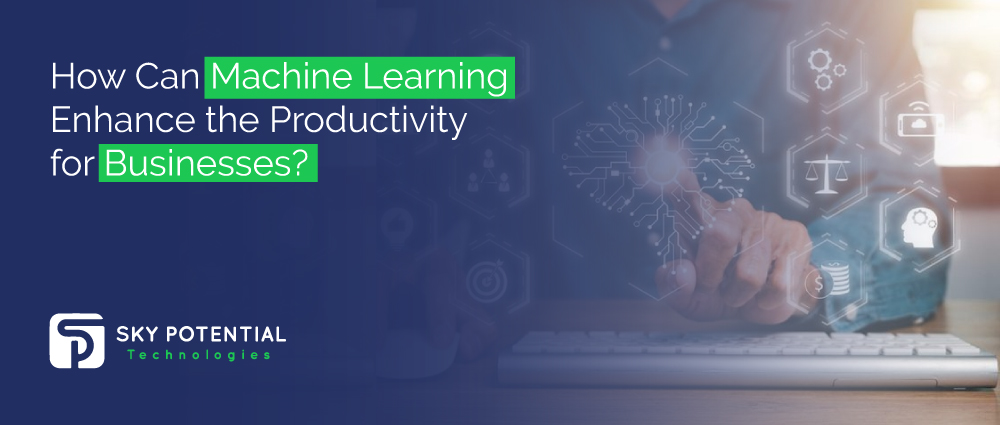- AI

Artificial Intelligence

Smart Products & Services
We follow Smart Products & Services

Intelligent Business Functions & Processes
We follow Intelligent Business Functions & Processes

Robotic Process Automation
We follow Robotic Process Automation

Personalized
healthcareWe follow Personalized healthcare

Identifying at-risk patients
We follow Identifying at-risk patients

Optimized routing and scheduling
We follow Optimized routing and scheduling
- ML

Machine Learning

Predictive
AnalyticsWe follow Predictive Analytics

Service Personalization
We follow Service Personalization

NLP
We follow NLP (Natural Language Processing)

Stock Market Forecasting
We follow Stock Market Forecasting

Fraud Prevention
We follow Fraud Prevention

Recommender engines
We follow Recommender engines
- blockchain

Blockchain

Public Blockchain
We follow Public Blockchain

Private Blockchain
We follow Private Blockchain

DEFI
We follow DEFI Blockchain

Initial stake pool offering development
We follow initial stake pool offering development
- IOT

Internet of Things
- AR
- Business Solutions

Business Solution

Business Performance Management
We follow Business Performance Management

Decision Making & Big Data Analytics
We follow Decision Making & Big Data Analytics

Enterprise Data Management
We follow Enterprise Data Management
- Apps

Apps

Native Apps
We follow Native Apps

Cross Platform Apps
We follow Cross Platform Apps

Web Apps
We follow Web Apps

Hybrid Apps
We follow Hybrid Apps

Cloud Native Apps
We follow Cloud Native Apps
- Lab

How Can Machine Learning Enhance the Productivity for Businesses?
Machine learning advancements provided businesses with advantages ranging from $250,000 to $20 million, or potentially a long-term investment of a few billion dollars spread out over several years according to Deloitte.
Algorithms for machine learning services provider Unstructured data can be quickly transformed into useful insights by machine learning (ML) to solve complex business issues. Data can be mined for insights and hidden patterns using iterative machine learning.
Machine learning enhances scalability and business processes. Growing production quantities, data availability, accessible computing processing, and data storage have led to a significant machine learning boom. As a result, businesses may now gain from understanding machine learning and using the same models in their own processes.
How Does Machine Learning Work?

The term “machine learning” is general and can be used to describe many different techniques. Yet in the end, it all comes down to making a difference in society or the economy.
Then, what precisely is machine learning? The most straightforward explanation is to think of it as a unique form of production line. Using input data, a machine learning model can produce results. To properly develop, ML algorithms need training data to learn from.
Anyone seeking more ought to: The processing of input (such as data from your CRM, databases, and spreadsheets) is what machine learning models produce (e.g., finding fraudsters, handling claims, classifying what the customer asked). The machine learning team uses sample data to train algorithms to produce the required output. For most businesses, there is typically no need to go things farther. Just ask your ML partner for additional information as needed.
Artificial Intelligence, Deep Learning, and Machine Learning
Simply said, artificial intelligence (AI) solves issues that call for human intelligence. Machine learning (ML), a subset of artificial intelligence (AI), makes use of data to identify patterns and forecast future events. It implies that machine learning and AI are not always the same thing. For further disciplines that may overlap, such as deep learning and data science, see the figure below.
What Purposes Does Machine Learning Serve?
Machine learning (ML) is generally seen as a great solution to a range of problems. The fact is that ML may resolve or at least improve many situations, giving the impression that it is practically magical. Yet, if a CEO understands how to incorporate machine learning into a company’s operations, AI efforts will be effective.
Identification of Patterns and Trends
A machine learning system can evaluate large volumes of data and identify patterns and trends that a human may overlook. A machine may find complex correlations and linkages in the data, allowing it to foresee things like the need for equipment maintenance. AI may use sensor data to identify patterns in vital signs that indicate a component is deteriorating far earlier than a person would. Thus, the technology is effectively employed for data mining, especially when it is done continually.
Automation of Processes
Machine learning models provide speedy process adaptation without requiring human involvement. Moreover, machine learning algorithms can improve with time. Efficiency and accuracy typically rise as the amount of data available to learn from increases. As a result of their increased “experience,” the ML algorithm or programs provide better judgements or predictions.”
Handling Data with High Volatility and Dimensions

Machine learning algorithms can handle multidimensional and highly variable data in dynamic or unpredictable environments. It’s not the easiest task, the machine learning team must confess. But in this case, efficient application of machine learning might save a lot of money and time.
One example of this use is the location of police patrols. Analysis of case studies from the preceding four years, as well as consideration of the local economy, population, and even weather conditions, are used to produce predictions for the locations.
Examples of Business Applications of Machine Learning

IT business automation alike could profit from the usage of machine learning because each industry has a variety of special use cases that merit their own in-depth publications. A use for AI and a way to put machine learning into practice may be found by nearly any organization in any industry that generates data.
- AI and machine learning in utilities, for instance, may be able to forecast utility use and facilitate more efficient energy production.
- Assembly line automation boosts output, and machine learning and AI help maintain workplace safety.
- AI in telecom enhances user experiences and saves money for businesses.
- AI in aviation ensures air traffic command and oversight in addition to setting ticket rates.
- ML and AI in finance and banking typically use natural language processing to construct conversational AI banking solutions. These programs provide excellent customer service. Nonetheless, it may be used in the financial sector for financial advice or regulatory compliance.
- The public sector has a wide range of AI use cases. Examples include spotting tax fraud, predicting car accidents, or handling emergencies.
- While AI in education aids customized learning and automates test checking, AI in retail and e-commerce, for instance, analyses customer behavior.
- In the pharmaceutical and healthcare sectors, artificial intelligence (AI) and machine learning improve and speed up drug research, testing, and diagnostics.
Advantages of Machine Learning
-
Improved Client Experience

If you have any, AI might be advantageous to your clients (hence, your business). Consumers could observe a lag between their needs and business solutions. Offering quick, personalized client experiences using automated chatbots, callbots, and other customized messaging platforms that are outfitted with deep machine learning and language processing models helps solve these issues. Also, the efficiency of the customer service staff increased by minimizing manual tasks.
-
ErrorMitigation
The machine understands only accuracy. The machine dutifully carries out instructions once they are presented in explicit terms. This implies that errors caused by the “human component” in your automated processes may be eliminated. A competent ML algorithm will save your employees from tedious and repetitive tasks. Such positions won’t require a lot of human interaction, thus they’ll be ignored.
-
Automation
The use of AI results in IT business automation, as was already mentioned. Additionally, that automation may enhance practically every aspect of a firm, including marketing and communications as well as internal onboarding and help. Automation using AI and ML in industrial processes, for instance, can reduce testing costs and scrap rates while increasing yield by up to 30%.
Also, employees had access to information on ideas and activities that manual procedures had previously required. Instead of the monotonous minor tasks, automatic operations provide you the opportunity to focus on more difficult and creative tasks.
-
Tackling Difficult Issues
Machine learning enables devoting important time to more challenging problems because it delivers solutions and the possibility for scale.
-
Growth in Operational Effectiveness
Machine learning also boosts efficiency since it eliminates errors and automates repetitive tasks. Robots and chatbots can both work nonstop and analyses enormous amounts of data without becoming fatigued. Thus, it is anticipated that using AI will boost company productivity by 54%.
-
Creating Decisions
Making decisions more intelligently is a goal of applying AI and ML. Humans are unable to process and coordinate the massive amount of data as quickly or efficiently as robots can. A machine learning system can be used to derive an objective judgement from unstructured data. AI automates data transmission, trend analysis, and outcome predicting while removing human emotion.
Beware of the Drawbacks of Machine Learning
-
The Possibility of Errors
An ML algorithm may produce poor, biased, or simply undesirable results. Nevertheless, errors do occur, and machine learning services providers are still unable to fully forecast and prevent them. These errors can also be very different from one another. For instance, a sensor that isn’t working properly can output false information. If the machine learning system uses this flawed data, erroneous results will occur. For instance, the comparable products mentioned might not even be same or closely related.
-
Data Gathering
Even while certain machine learning use cases require tremendous volumes of training data, good results can typically be reached by using large publicly available data sets and fine-tuning the algorithm on good quality, domain-specific data sets.
Large data sets can be laborious and time-consuming to compile, but they must be of high quality, which necessitates some expertise. In order to acquire better results, it frequently necessitates changing the data collection process. In addition, experience provides knowledge of the essential adjustments.
-
Time and Resources Required For Outcomes from Machine Learning

As was already mentioned, getting the data alone takes time. It is possible that the algorithm won’t always be ready to satisfy your needs. A new employee’s training phase is comparable to the machine learning method used with fresh data. It’s a good thing a machine learning engine can’t give its two weeks’ notice.
Large amounts of computational power are needed to run computer models and analyses vast amounts of data, which is usually expensive. So, it’s essential to consider the time and money required for technological development to the point where it would be profitable before using machine learning.
-
Interpretation of Results
It could be challenging to understand the data that machine learning algorithms produce. As a result, businesses should exercise caution when choosing algorithms that suit their requirements.
Conclusion
The advantages of machine learning make this technology a potent weapon for giving companies a competitive edge. The use of ML does not, however, come without risks. It is advisable to speak with machine learning experts initially in order to avoid issues and make informed judgements. Furthermore if you are looking for ML and software development services, then get touch with Sky Potentials.

















































Leave a Reply